Being both a science geek and a movie buff can be exhausting. It can make it almost impossible to sit through certain films without exclaiming things like “those human batteries aren’t obeying the law of energy conservation!” or “that’s not how gravity assisted acceleration works!” Yes, it’s pedantic, and probably extremely annoying for your fellow movie-watchers, but sometimes it just can’t be helped. So if you have a nerdy friend that loves pointing out all the fantastic follies of Hollywood science, you might want to avoid being in the same room as them when watching these movies and TV shows that feature some seriously senseless scientists.
Here are the 12 worst scientists from movies and TV of all time.
12. Dr. Peter Venkman – Ghostbusters
If it wasn’t expressly said in the movie, most people probably wouldn’t have even placed Ghostbuster Peter Venkman in the scientist category. Though the rest of the squad doesn’t fair much better, at least Egon and Raymond engage in a few scientific-sounding discussions about things like ectoplasm and total protonic reversal. Venkman always seems to be much more interested in just making money from the extermination of ghosts rather than developing ways to study and learn things from them. But he still gets a bit of credit for helping save the world from a demonic god of destruction.
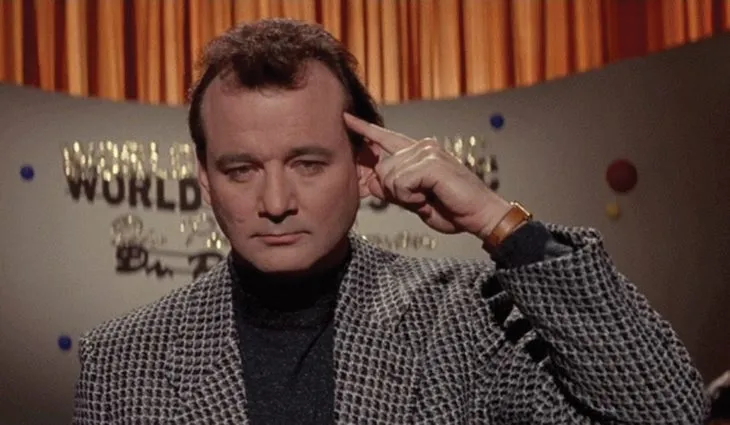 Source: Screenshot via Columbia Pictures
Source: Screenshot via Columbia Pictures11. Walter White – Breaking Bad
Sure, Walt’s a great chemist, that blue meth he cooks up is proof enough of that. But in Breaking Bad, Walt is forced to steal massive amounts of methylamine in order to keep his laboratory churning out drugs. An analytical chemist and blogger Jonathan Parkinson has pointed out that those theft crimes really just added an unnecessary risk for the sake of drama. In real life, if a brilliant chemist wanted to make his own home-brewed methylamine, he or she could easily do so using a few chemicals that aren’t very hard to come by.
So why does Walt steal it and risk putting the police on his trail? Probably because it makes for a more interesting story and serves as an early stepping stone for his evolving criminal persona.
 Source: Screenshot via HBO
Source: Screenshot via HBO10. Dr. Doom – Fantastic Four
In the 2005 Fantastic Four movie, Victor Von Doom is the CEO of an industrial scientific corporation that turns scientific discoveries into profitable business ventures. This seems realistic enough considering that there will always be people more interested in making money than helping others, and making new products is often the best way to implement new breakthrough technologies. But after he helps Ben Grimm return to his normal human form, Doom accelerates his own cosmic ray symptoms and just decides to go full on supervillain. Why do supervillain scientists always have to be so emo?
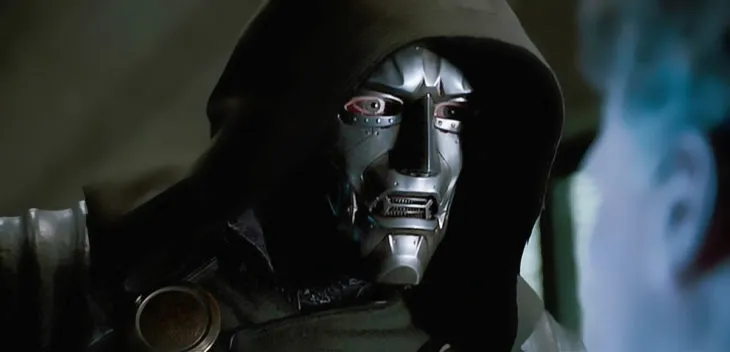 Source: Screenshot via 20th Century Fox
Source: Screenshot via 20th Century Fox9. Poison Ivy – Batman & Robin
Although Batman & Robin certainly wasn’t a movie that was shy about throwing out ridiculous ideas, the scientific credibility of supervillain Poison Ivy still seems totally laughable. All of her botanical science is incredibly unrealistic and erroneous. After being injected with lethal poison, rather than perishing, Ivy develops the sexy superpower to kiss people to death. She then goes full-blown eco-terrorist and tries to destroy the world because she feels people don’t care about plants enough.
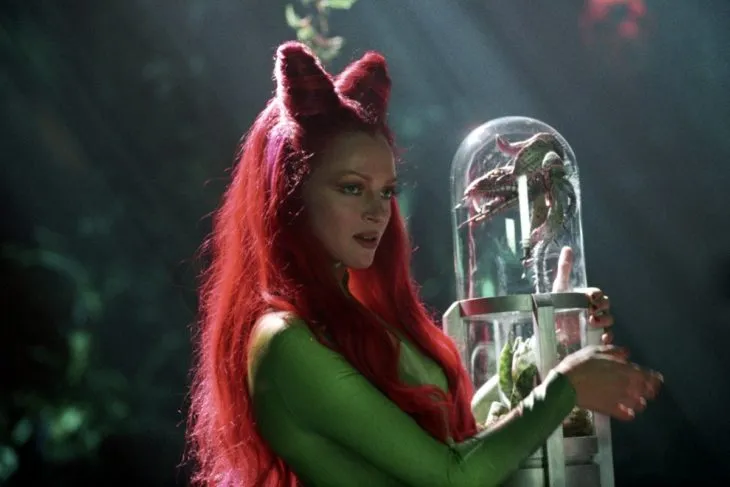 Source: Screenshot via Warner Bros.
Source: Screenshot via Warner Bros.8. Dr. Arnim Zola – Captain America: The Winter Soldier
People who are inherently evil generally don’t make good scientists—at least not from an ethical standpoint. Dr. Arnim Zola is just inherently evil. He isn’t transformed by a lab accident or driven mad by his own designs, he’s simply following his own ideas which happen to fall perfectly in line with those of the villainous organization Hydra.
Although he’s apparently biochemistry and technological genius who was able to upload his consciousness to a computer, as a member of Hydra all Zola seems to care about is devising inhumane human experiments that will help him develop new and unheard of ways of killing people.
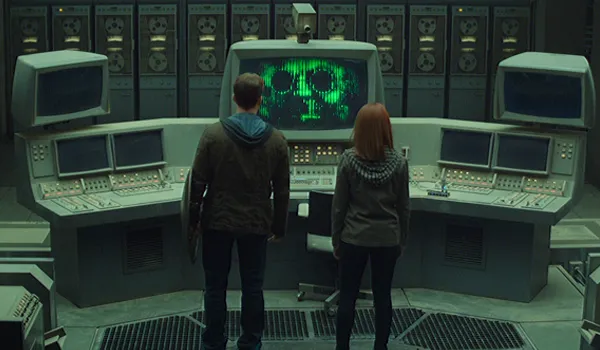 Source: Marvel Studios
Source: Marvel Studios7. Professor Maggie Walsh – Buffy the Vampire Slayer
UC Sunnydale Psychology professor Maggie Walsh first became involved with Buffy when the young vampire slayer was enrolled in her first year Psychology class. Carrying on the traditions of mad science, she starts messing around with the laws of nature in an attempt to create a new weapon. She seems more than willing to take out anyone who stands in the way of her methods, and her evil ways are exemplified when she secretly gives behavior-altering drugs to soldiers placed in her care. Furthermore, she goes full-on Victor Frankenstein when she tries to create some sort of reanimated human-robot-demon hybrid to do her bidding. Any real scientist would know that it’s impossible to revive dead tissue to create a functional, thinking, autonomous being. Or, at least it’s impossible with our current technology and lack of supernatural powers.
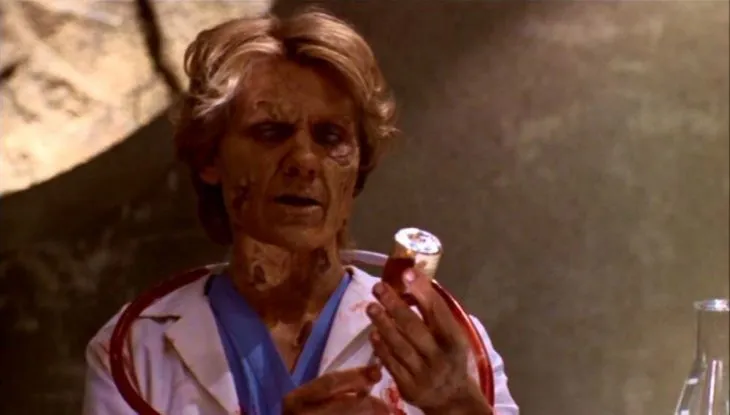 Source: Screenshot via 20th Century Fox
Source: Screenshot via 20th Century Fox6. Aaron – Primer
Although not technically a professional scientist, Arron and his friend Abe still possess highly advanced knowledge and understanding of complicated physics, mathematics, and engineering. And anyone who can build a time machine should be more than deserving of the label “scientist.”
The science portrayed in Primer all seems pretty legit. Also, in keeping their device a secret, Aaron and Abe appear to be acting rationally, either through fear of exploitation of the technology or for purely selfish reasons. However, Aaron’s actions start to get a bit sketchy when it comes to ethics. He shows more propensity to use the box for his own petty personal gain and uses the time machine so he can do things like make a few extra bucks or gain admiration. He starts to let the power of the machine go to his head and eventually he screws up the timelines pretty badly, creating paradoxes and meeting his double in the process. By the end, he’s even seen taking steps to make the time machine commercially available. Which, of course, can only have disastrous outcomes.
 Source: Screenshot via
Source: Screenshot viaTHINKFilm
5. Dr. Octavius – Spider-Man 2
Dr. Otto Octavius was almost more dangerous as a scientist than he was a supervillain in Spider-Man 2. Using a radioactive Tritium isotope he devises a renewable fusion energy source. Yet, despite the enormous amount of power generated by his experiments, he seems to think the only safety precautions required are a pair of old welders goggles and four metal tentacles that he controls with his brain.
In real life, nuclear experiments are conducted at special secluded test sites like the deserts of New Mexico and Nevada. Octavius thinks everything will be fine if he does all his testing in a loft smack dab in the middle of lower Manhattan. If a large-scale nuclear disaster were to happen he could have instantly wiped out about three million people. But, in his defense, no one from the press that goes to see the experiment points out that it might be a bad idea—not even supposed whiz kid Peter Parker.
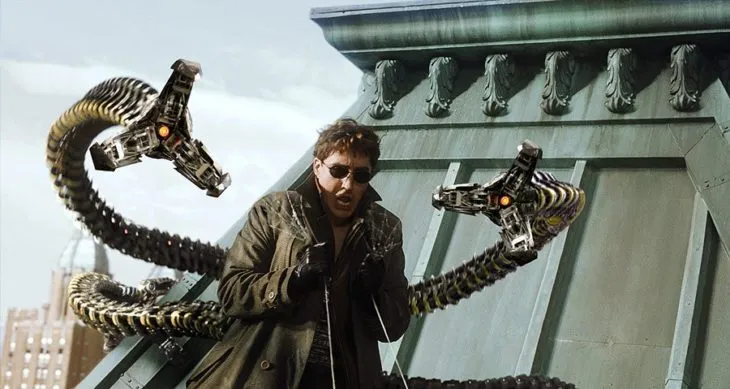 Source: Screenshot via Columbia Pictures
Source: Screenshot via Columbia Pictures4. Dr. Curt Connors – The Amazing Spider-Man
Apparently, Spider-Man villains really exemplify poor scientific practices. Dr. Curt Connors is the stereotypical good scientist gone mad as the result of self-experimentation gone awry. And by “good” scientist we simply mean he had good intentions because his actual scientific practices are horrible. He basically just injects himself with lizard DNA and hopes for the best. Although he might have snuck in a little bit of science by using a gene-therapy virus, any good scientist would have only administered the gene that is responsible for limb regeneration and not the ones which produce undesirable traits such as a tail and scaly green skin.
In order to regenerate a fully-working arm, you would need to build a complex set of human tissues, including blood vessels, muscles, bones, nerves and skin cells. And all those elements would need to be seamlessly incorporated into the existing body in order for the arm to function. This is an incredibly complicated task, which is probably why limb regeneration is a trait that’s always been absent from mammals.
It’s highly unlikely that lizard DNA could be used to bring about regenerative growth in humans or other mammals due to the divergence in anatomy. However, that’s not to say that a better understanding of the molecular process behind limb regeneration in lizards and amphibians wouldn’t yield knowledge that could translate to humans.
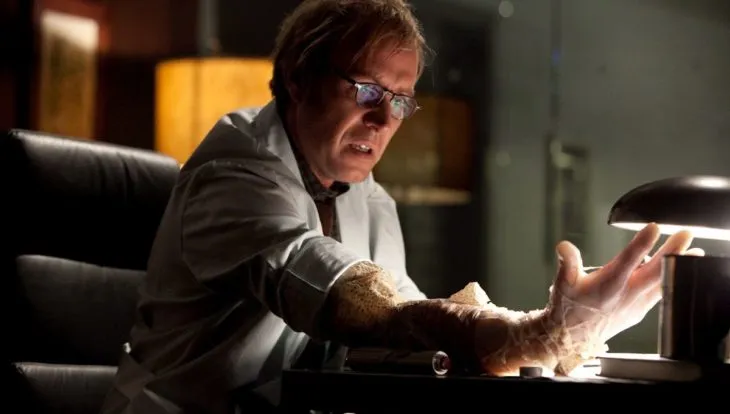 Source: Screenshot via Columbia Pictures
Source: Screenshot via Columbia Pictures3. Dr. Henry Wu – Jurassic Park/Jurassic World
The Jurassic Park franchise is perhaps the best example of the disastrous consequences that can result from reckless science. Not only does Dr. Henry Wu not seem to have any ethical concerns about using fossilized genetic material to bring back dinosaurs, but he eventually becomes corrupt and villainous, as he creates a dangerous new genetic hybrid at the request of the profit-driven park owner in Jurassic World. Furthermore, his creation of the Indominus Rex appears to be a more or less a random combination of cool animal attributes incorporated into a 50 foot-tall murder monster. Though he seems to be a little surprised at how deadly the hybrid turned out, he doesn’t seem to be all that devastated by the deaths that it causes, deeming them as merely “unfortunate,” and he’s generally unconcerned over the numerous crimes against nature he’s committed by creating the new species in the first place.
 Source: Screenshot via Universal Pictures
Source: Screenshot via Universal Pictures2. Will Rodman – Rise of the Planet of the Apes
Rather than sliding down a slippery slope into supervillainy, like a lot of the characters on this list, Will Rodman earns his place through sheer incompetence. In his rush to find a cure for Alzheimer’s, he accidentally unleashes a deadly virus that wipes out most of humanity.
Although the viral gene therapy techniques used in the movie to fight Alzheimer’s are pretty scientifically accurate, in real life the types of viruses used would be unlikely to spread between humans. That’s not to say it’s impossible though, and, in the event of a pandemic, a quickly spreading virus can have devastating effects on a population.
In his desperation, Will acts carelessly and doesn’t consider all the potential consequences of his actions involving the ALZ-113 virus. Granted, he probably just assumed it wouldn’t wipe out humanity, but that’s just another reason why he was a bad scientist.
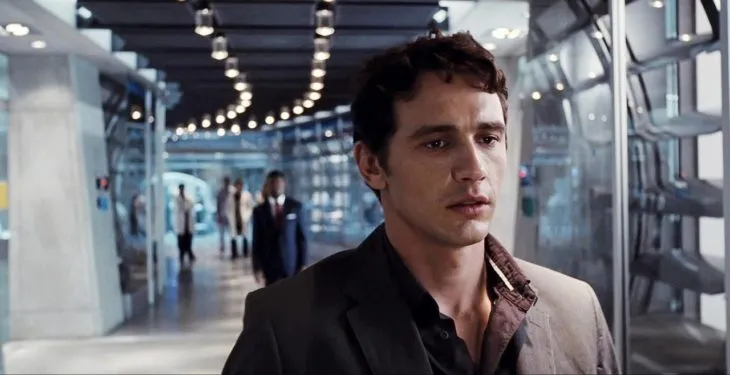 Source: Screenshot via 20th Century Fox
Source: Screenshot via 20th Century Fox1. Indiana Jones
Real life archeologists probably think Indiana Jones would be better off finding work on a demolition crew than on an important historical expedition. That’s because, even though he never fails to track down the relic he’s after, he pretty much always wrecks the entire geological site after he passes through. He just kicks down the door of an ancient temple or sacred burial site without paying any mind to the significance of his surroundings. His tendency to become preoccupied with a single artifact and disregard everything else around him demonstrates a complete lack of interest in actual archaeological matters. Not to mention he constantly skirts his teaching duties and neglects countless students that likely paid top dollar to be educated by the world-famous professor. In the end, Indiana Jones is really just an action junky who likes to occasionally put on some glasses and scribble things on a chalkboard.
 Source: Screenshot via Paramount Pictures
Source: Screenshot via Paramount Pictures